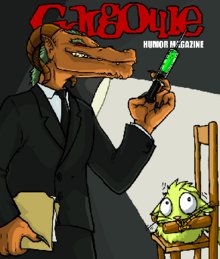
Sergio Aragonés Domenech is a Spanish/Mexican cartoonist and writer best known for his contributions to Mad magazine and creating the comic book Groo the Wanderer.

Addison Morton Walker was an American comic strip writer, best known for creating the newspaper comic strips Beetle Bailey in 1950 and Hi and Lois in 1954. He signed Addison to some of his strips.

Harvey Kurtzman was an American cartoonist and editor. His best-known work includes writing and editing the parodic comic book Mad from 1952 until 1956, and writing the Little Annie Fanny strips in Playboy from 1962 until 1988. His work is noted for its satire and parody of popular culture, social critique, and attention to detail. Kurtzman's working method has been likened to that of an auteur, and he expected those who illustrated his stories to follow his layouts strictly.

The Daily of the University of Washington, usually referred to in Seattle simply as The Daily, is the student newspaper of the University of Washington in Seattle, Washington, USA. It is staffed entirely by University of Washington students, excluding the publisher, advertising adviser, accounting staff, and delivery staff.

John Burton Davis Jr. was an American cartoonist and illustrator, known for his advertising art, magazine covers, film posters, record album art, and numerous comic book stories. He was one of the founding cartoonists for Mad in 1952. His cartoon characters are characterized by extremely distorted anatomy, including big heads, skinny legs, and large feet.
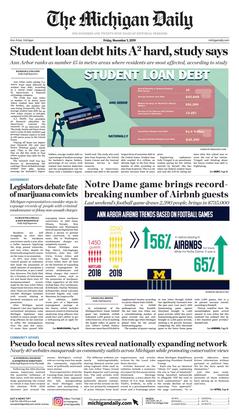
The Michigan Daily, also known as 'The Daily,' is the independent student newspaper of the University of Michigan published in Ann Arbor, Michigan. Established on September 29, 1890, the newspaper is financially and editorially independent from the university. The Daily is often considered one of the most influential student publications, and is one of the largest student publications in the United States with over 500 student staff members.
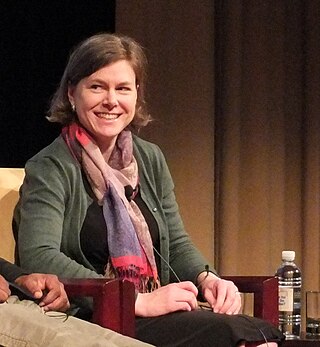
Jen Sorensen is an American cartoonist and illustrator who creates a weekly comic strip that often focuses on current events from a liberal perspective. Her work has appeared on the websites Daily Kos, Splinter, The Nib, Politico, AlterNet, and Truthout; and has appeared in Ms. Magazine, The Progressive, and The Nation. It also appears in over 20 alternative newsweeklies throughout America. In 2014 she became the first woman to win the Herblock Prize, and in 2017 she was named a Pulitzer Finalist in Editorial Cartooning.

Arthur Henry Young was an American cartoonist and writer. He is best known for his socialist cartoons, especially those drawn for the left-wing political magazine The Masses between 1911 and 1917.

Tharunka is a student magazine published at the University of New South Wales in Sydney, Australia. Established in 1953 at the then New South Wales University of Technology, Tharunka has been published in a variety of forms by various student organisations. At present, Tharunka is published 8 times a year by Arc @ UNSW Limited. The name Tharunka means "message stick" in a Central Australian Aboriginal language.
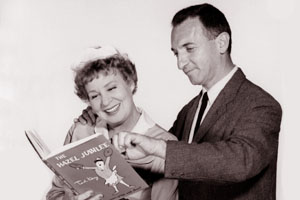
Ted Key was an American cartoonist and writer. He is best known as the creator of the cartoon panel Hazel, which was later the basis for a television series of the same name, and also the creator of the Peabody's Improbable History animated segments.

The Cavalier Daily is an independent, student-run daily news organization at the University of Virginia. Founded in 1890, under the name College Topics, The Cavalier Daily is Virginia's oldest collegiate daily and the oldest daily newspaper in Charlottesville, Virginia.
The California Pelican was a college humor magazine founded in 1903 by Earle C. Anthony at the University of California, Berkeley. Lasting eighty years, it was the first successful student humor magazine in UC Berkeley, though it was preceded by Smiles in 1891 and Josh in 1895. It is succeeded by the Heuristic Squelch, which is still running.

The Jester of Columbia, or simply the Jester, is a humor magazine at Columbia University in New York City. Founded on April Fool's Day, 1901, it is one of the oldest such publications in the United States. Printed continuously at least through 1997, it was revived in 2001 after a short lapse in publication and again in 2005 after another, shorter one. Jester now produces magazines and sponsors comedy events on Columbia's campus.
Magazine Management Co., Inc. was an American publishing company lasting from at least c. 1947 to the early 1970s, known for men's-adventure magazines, risqué men's magazines, humor, romance, puzzle, celebrity/film and other types of magazines, and later adding comic books and black-and-white comics magazines to the mix. It was the parent company of Atlas Comics, and its rebranded incarnation, Marvel Comics.
Chaff was the students' newspaper at Massey University, New Zealand, from 1934 until 2011.
The University of Oregon has a diverse array of student-run and non-student-run media outlets.
The Cornell Lunatic is the college humor magazine at Cornell University, founded on April 1, 1978, by Joey Green.
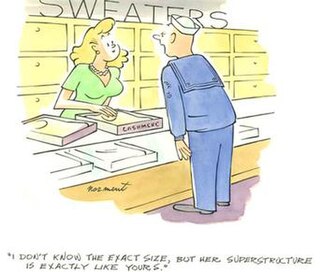
John Murray Norment (1911–1988) was an American illustrator, gag cartoonist, magazine editor, artist, and photographer.
1000 Jokes was a humor magazine launched by Dell Publishing in 1937. With a later title change to 1000 Jokes Magazine, it was published quarterly over three decades. During the 1950s, it was edited by Bill Yates with associate editor John Norment.
The Texas Ranger was the undergraduate humor publication of the University of Texas at Austin (UT), published from 1923 to 1972. A number of people who later went on to become key members of the underground comix scene — including Frank Stack, Gilbert Shelton, and Jaxon — were Texas Ranger editors and contributors during the period 1959–1965. Other notable contributors to The Texas Ranger over the years included Robert C. Eckhardt, John Canaday, Rowland B. Wilson, Harvey Schmidt, Bill Yates, Liz Smith, Robert Benton, Bill Helmer, Robert A. Burns and Wick Allison.
